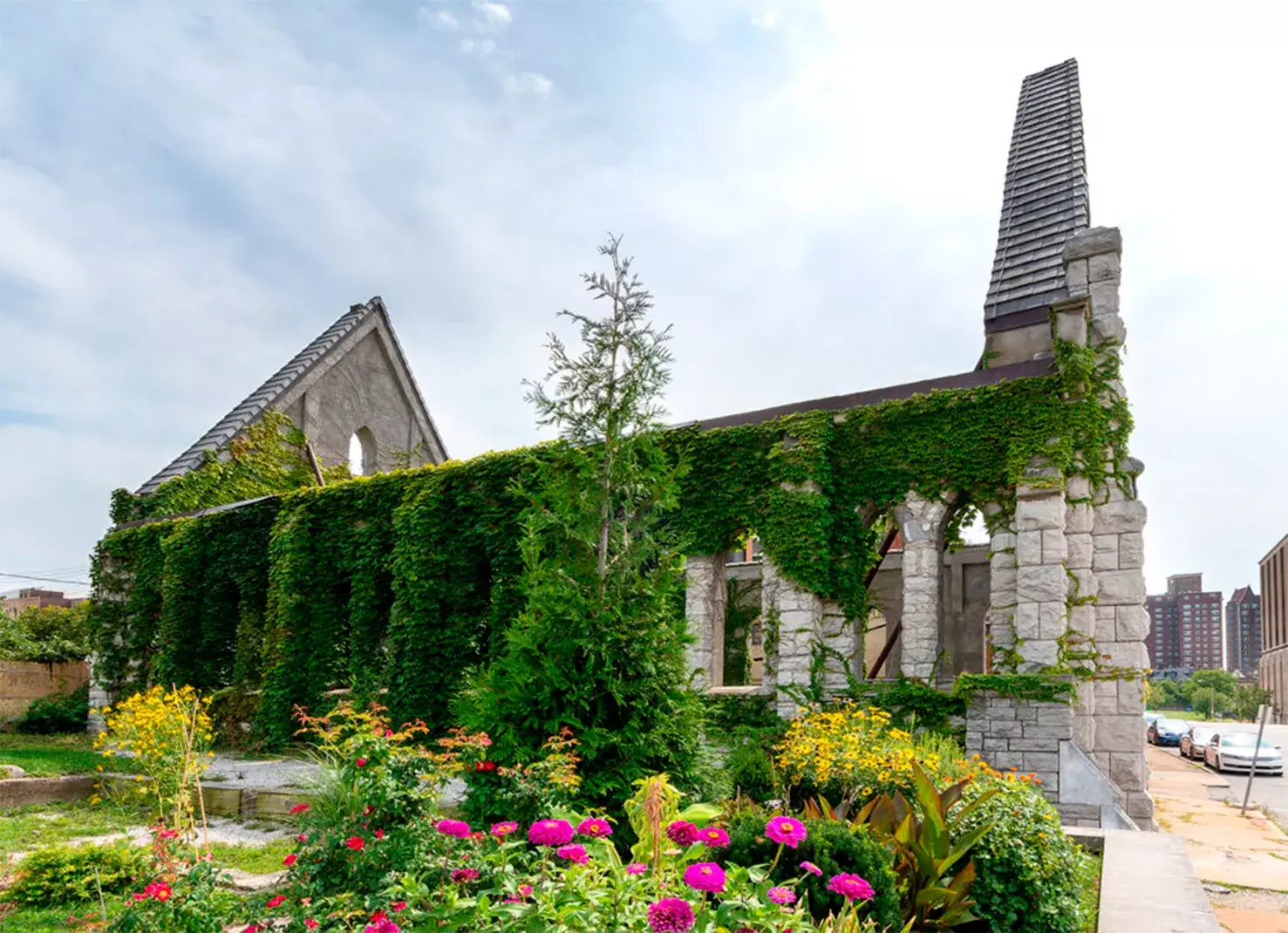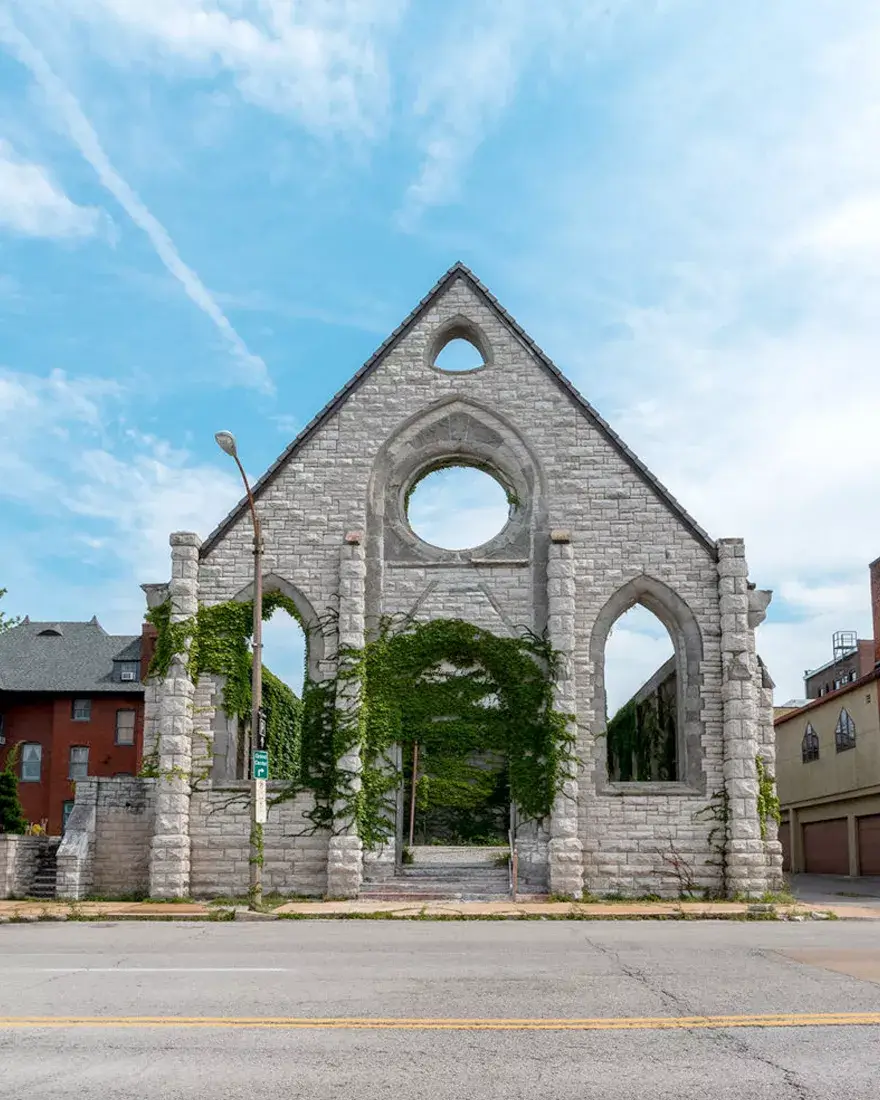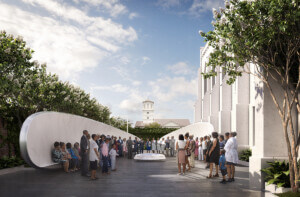St. Louis-based art museum the Pulitzer Arts Foundation is expanding the physical footprint of its campus within the Gateway City’s Grand Center Arts District with the announcement that it will debut a new, community-anchored open-air art space in July. The setting for the new venue, dubbed Spring Church, is a dramatic and locally iconic one: the ruins of a Gothic revival-style church built in 1884 that served four congregations over a century-long span before it was decimated by fire in 2001.
The church’s architectural shell was left standing following the catastrophic blaze, and over the past two years the facade has been meticulously restored and stabilized by the Foundation working alongside a team of preservation and structural engineering experts. Beginning next month, the roofless house of worship at 620 North Spring Avenue, freshly preserved and secured, will serve the community once again, albeit in a wholly different manner than during its first 117 years in existence. Upgrades carried out at the site include extensive repairs to the structure’s historic masonry as well as the addition of accessible visitor pathways and all-important electric and lighting infrastructure. Key project partners included design consultancy Kiku Obata & Company and structural engineer McNealey Engineering, Inc., both St. Louis-based, along with Guy Nordenson and Associates in the role of consulting structural engineer, electric and civil engineer Mazzetti, Wollenberg Building Conservation, Owen Development, and historian Michael Allen of Preservation Research Office.
Studio Land Arts, a collaborative landscape practice based just across the Mississippi River from St. Louis in Granite City, Illinois, has also revamped a vacant lot-turned-community green space located adjacent to Spring Church. Visitors to the refresh green space will find new seating, plantings, and newly unearthed architectural elements from an old building at the property that have been incorporated into the site.

Studio Land Arts is also the designer of Park-Like a “garden for people, plants, and wildlife” located directly across the street from the Foundation’s main museum space designed by Tadao Ando. The museum and Park-Like, as well as the neighboring Contemporary Art Museum St. Louis, are located just a quick, three-ish-minute walk away from Spring Church.
“The Pulitzer is deeply committed to contributing to our neighborhood, expanding the visitor experience of the Foundation to include not only the museum at its heart, but also Park-Like and now the Spring Church,” said Pulitzer Arts Foundation executive director Cara Starke in a press announcement. “We look forward to welcoming our neighbors and visitors, whether it be to spend time in the space on their own terms, or to experience public art in the Spring Church’s unique architecture.”
Per the Foundation, the re(opening) of Spring Church will be marked with a summertime series of “artist projects, celebrations, and community collaborations,” including a week-long public artwork and event series presented by Des Moines, Iowa-based multidisciplinary artist and environmental justice activist Jordan Weber. Entitled All Our Liberations, the program series will include events for both formally incarcerated individuals and the larger public. A formal opening celebration will be held at Spring Church this October and include a performance St. Louis Symphony Orchestra InUnison Chorus.

Prior to the museum’s acquisition of the Spring Church site and the adjacent lot in May 2020, the property was owned by the nonprofit Grand Center, Inc., which purchased it in 2003, two years after it was gutted by fire. As detailed by the Foundation in its announcement, Grand Center had envisioned transforming the site into a sculpture garden but “structural challenges” prevented those plans from moving forward. Despite the setback, the shell of the old church—haunting and highly photogenic—was the subject of a 2008 public art installation, The Light Project by Rainer Kehres and Sebastian Hungerer, and has served as the backdrop for many “spontaneous photo shoots and events.” In 2020, The Riverfront Times referred to the site as an “informal hot spot for every amateur ruins porn photographer in the St. Louis area.” This tradition will likely continue but with enhanced accessibility and safety.
Like Park-Like, Spring Church will be accessible to the public daily from sunrise to sunset when it opens next month.











